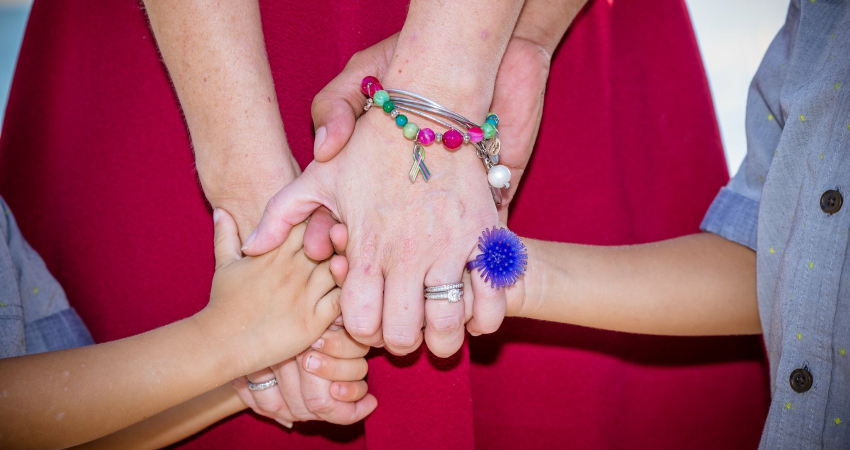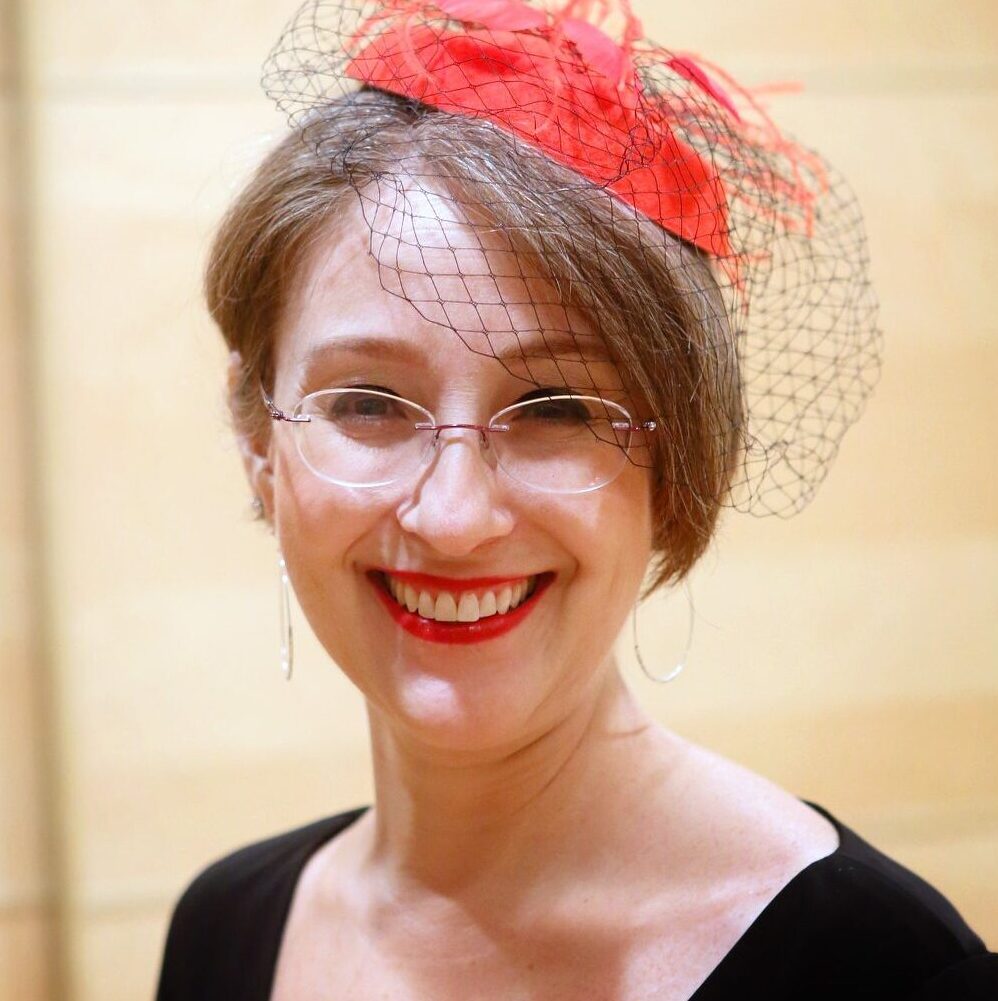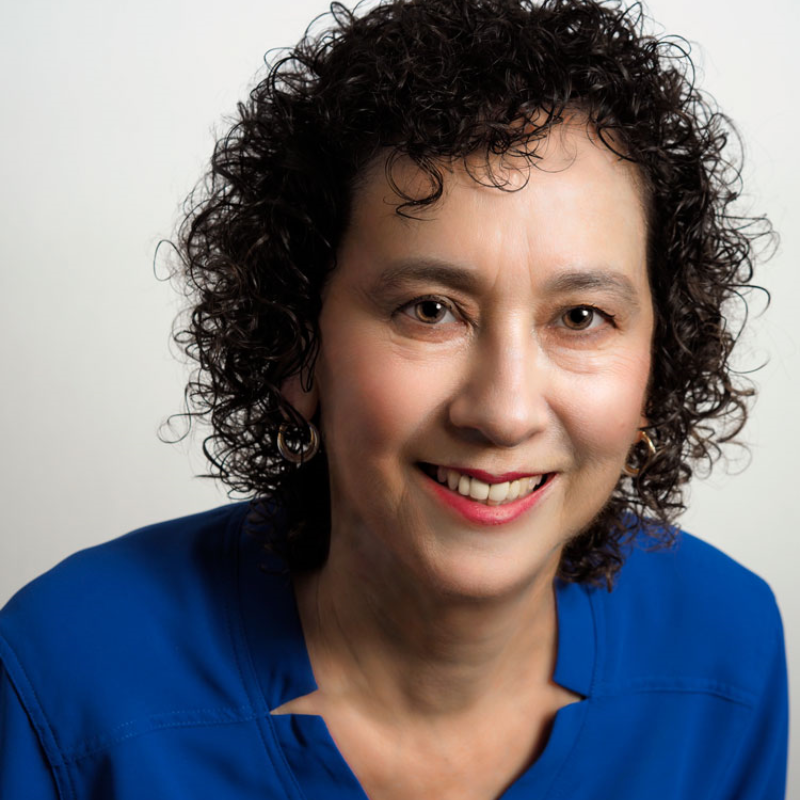Using medical marijuana for pain relief: Abigail M. Johnston
- 12/23/19
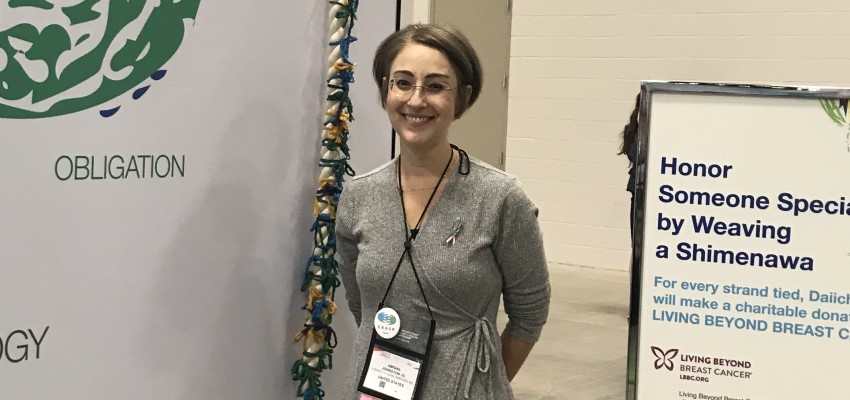
Medical marijuana is legal in 38 states, the District of Columbia, Canada, and about 24 other countries. Though marijuana is still banned by the federal government, state laws often give fast-track certification for medical marijuana use to people with cancer.
Abigail M. Johnston’s brothers and sisters often teased her about being the “straight and narrow” sibling. She got drunk in college only one time and never did it again. She never tried illegal drugs and attended what she describes as “a very conservative Christian law school.”
So it might be surprising to hear that Abigail, now 41, uses medical marijuana every day. It helps her with pain related to metastatic breast cancer, diagnosed in 2017. She has pain from bone metastases in her legs and pelvis and from side effects of surgery that implanted rods in her thighbones, or femurs, for structural support.
To relieve her pain, she uses two products made from medical marijuana, or cannabis: CBD oil and THC oil. THC is the chemical in marijuana that causes a “high” while CBD does not. Abigail buys these legally with a physician’s prescription at a state-licensed dispensary in Miami, where she lives. She takes both oils sublingually, by placing them under her tongue.
Abigail talked with LBBC contributing writer Robin Warshaw about her search for help with pain from breast cancer treatment and her experiences with medical marijuana, which she has used since August 2017.
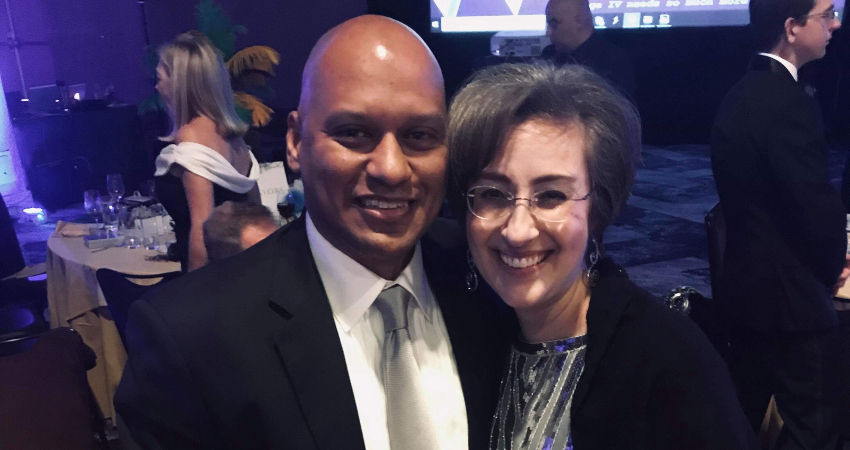
Robin: Did you have pain before breast cancer?
Abigail: When I was initially diagnosed with breast cancer, I was already limping. I had pretty significant pain in my right femur, but I thought I must have pulled a muscle or ligament. Because I had just been diagnosed with breast cancer and my kids were 3 and 1 at the time, it felt like there was no time to say, “Omigod, my leg hurts!” I just didn’t complain about it. That used to be my M.O. I didn’t tell doctors stuff, I just dealt with it.
I chose to have a lumpectomy. The surgeon obtained clear margins and I had no cancer in my lymph nodes. Then they discovered I had been stage IV from the beginning. The cancer had spread through my blood to my bones before I even felt a lump in my breast. That was the source of my leg pain.
Robin: How did inserting rods in your legs affect your pain?
Abigail: It was a very difficult time. I was in the middle of chemo, doing doxorubicin (Adriamycin) and cyclophosphamide (Cytoxan). One Friday I had my second chemo treatment, the next Friday I had my leg surgery, and the Friday after that I did my third chemo treatment.
I went into the surgery with pain but only when I was moving quickly or going upstairs. I came out of surgery with bone pain, muscle pain, and surgical pain. I still have issues with the surgical site because my muscles are still mad that they were messed with.
Microscopic bone shards, displaced during surgery, were left in my muscles and I developed a condition called heterotopic ossification. So I had bone growing in my muscles. That was almost as painful as the mets themselves. I was in intense pain. I have a pretty high pain tolerance and that just flattened me.
Robin: What pain medicine did you get after the rod surgery?
Abigail: I took hydromorphone (Dilaudid), an opioid, and had a pretty bad reaction – hallucinations and crazy nausea. I didn’t like how it made me feel.
That was my reaction to all of the opioids they’ve prescribed me. All they offered me for pain were narcotics. I asked about other options and flirted with the idea of gabapentin, which helps with nerve pain, but never took it.
Robin: Why did you decide to try medical marijuana?
Abigail: I sought it out because of my need to be present with my kids. I am a lawyer, but due to my diagnosis, I closed my law office. Spending time with my kids is my priority.
My boys are now 6 and 4. I have to drive them to school, take care of them. I can’t do that when I’m out of it [on opioid pain medicine]. Maybe I just never developed a tolerance to it, but it makes me loopy. If I take enough, it just puts me to sleep.
Robin: How did you find a medical marijuana provider?
Abigail: I was living in Orlando. The medical marijuana statute had passed in Florida about a year before my diagnosis. My doctors were at a religiously-affiliated hospital that decided medical marijuana didn’t fit with their worldview, so I found a practice that prescribed medical marijuana for pain management. They helped me get a card for the state registry but were entirely unhelpful with dosing. They said, “Take it until you feel weird.”
Because I had never experimented with anything, I had no frame of reference. A family member had worked in a California dispensary and gave me information about medical marijuana and dosing. I still didn’t feel comfortable experimenting on my own, especially because none of my doctors were positive about it.
I found a nurse practitioner in California who has a designation as a cannabis nurse. I did a Skype consult with her and sent her all my medical records. She said that medical marijuana might have an interaction with palbociclib (Ibrance), which I was taking, so she recommended waiting 2 hours after palbociclib before using CBD oil. I was comfortable with that and it worked for me.
I moved to Miami in October 2017 and now have a pain management doctor, an MD, who is also my palliative care doctor. She prescribes my medical marijuana. I brought her the report from the cannabis nurse and she was blown away at how detailed and scientifically correct it was. That made me feel better, having a medical doctor who said, “Yes, this is good.”
Robin: What’s your typical daily use of medical marijuana now?
Abigail: I’ve switched from palbociclib to alpelisib (Piqray) with fulvestrant (Faslodex) and am still working out how much medical marijuana to use with alpelisib and when. I take alpelisib in the morning and wait 6 hours before taking CBD oil. I deal with pain on a 3 or 4 level on a scale of 10 until I can take the CBD. It’s not fun, but I’ll take that over feeling fuzzy and not being able to function with my kids.
I take CBD oil every 2 to 4 hours during the day. When I go to bed, I take a combination of CBD and THC. With that, I can sleep through the night. Rolling on my side used to wake me up because I have so much pain where the incisions are. I still can’t put pressure there or tolerate body weight on my thigh.

Robin: Health insurance doesn’t cover medical marijuana. How much does it cost?
Abigail: I usually buy it every 2 months at a medical dispensary that has been vetted by my pain management doctor. I pay about $60 for a bottle of CBD oil that lasts me about 2 weeks. The THC oil is about $80 but I take less of it, so it lasts me about 2 months. I take 50 to 75 mg of CBD daily, depending on my pain and activity, and 30 mg of THC at night.
Robin: Has medical marijuana helped with any other side effects?
Abigail: During chemo, it absolutely helped with nausea. I know it affects mood, but I can’t say I’ve noticed a big help with mood.
When I was in a lot of pain from the bone shards in my muscles, I was taking 100 mg of CBD oil and just doubled it one day. I had an upset stomach and diarrhea because I went up too fast. I went back to 100 mg and then slowly went up to 200 mg and was fine.
Robin: Do you also take opioid medicines?
Abigail: I have opioids available to me if I’m in so much pain that I have to. About a year ago, we took the kids to Legoland. My husband was driving. It was such a day of activity. I took one oxycodone, 5 mg, the lowest dose. That dulled the pain enough that I walked all day and didn’t have an issue.
I also have tramadol available but it doesn’t touch the pain. My pain doctor wants me to have as many options as I can, so I’m not limited to one thing. I appreciate that she does that.
Robin: Do you talk openly about your use of medical marijuana?
Abigail: I tell my doctors everything. I see a naturopath, chiropractor, get acupuncture and see a Chinese medicine doctor. Medical marijuana is a tool in my toolbox.
My medical oncologist was negative for a long time. Then she started seeing that I’m not taking opioids, I’m active, it’s helping me – and she’s a convert! She now tells people, “Maybe this is something you might try. Go see the pain management doctor.” That’s how we change what doctors think, when they see effectiveness in their patients.
There is still stigma to it. I’m in a closed online support group with people who mostly have early-stage breast cancer diagnoses. One posted a question about medical marijuana that she said was for someone else who was too afraid to ask. I posted information about what I take, where I go for it. Then the woman sent me a private thank-you message, saying the questioner was herself but she was too embarrassed to ask.
I’m the first person who will admit that it’s not for everybody. It’s not a magic pill, it’s not a cure-all. It’s a tool. And not every tool works for every person.
